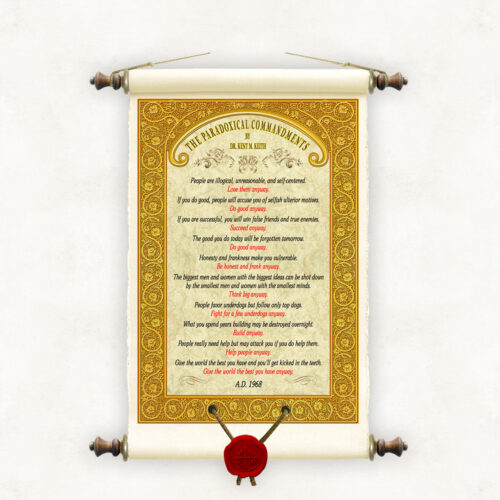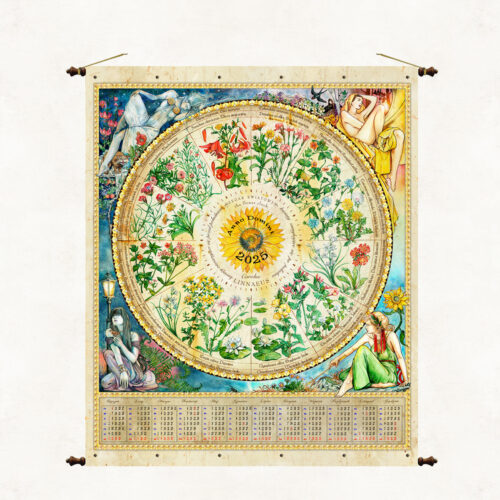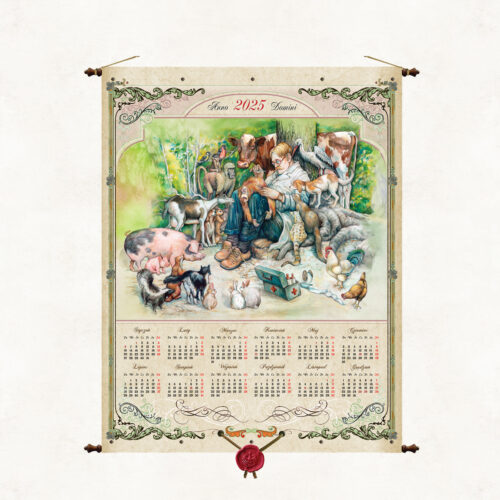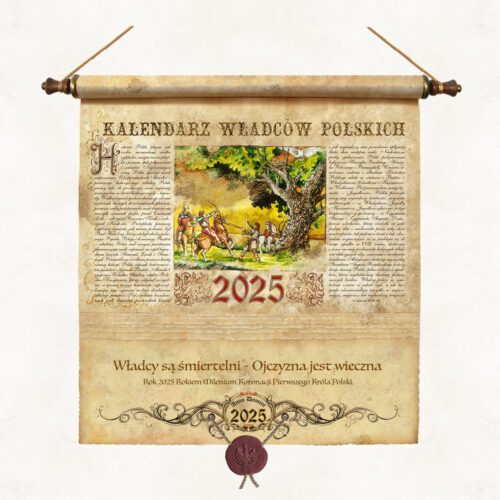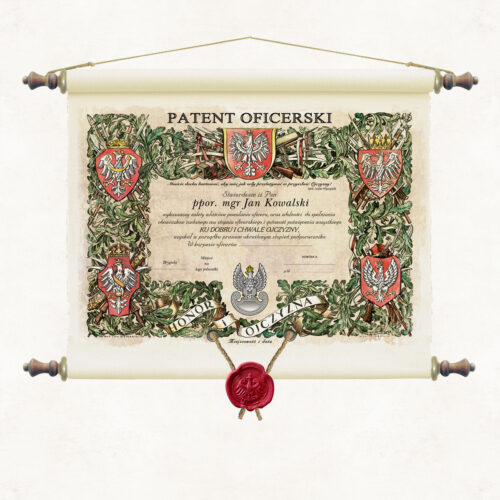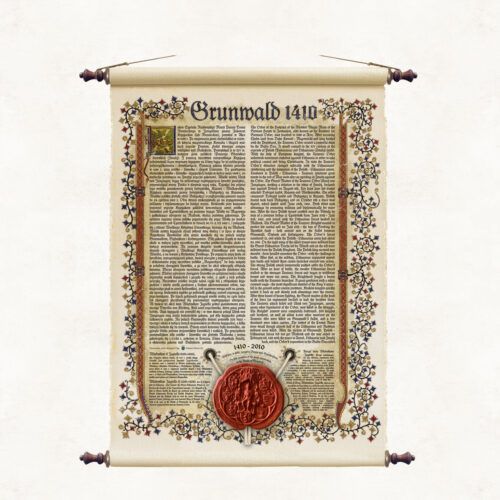-
The Paradoxical Commandments This piece was written by Kent M. Keith in 1968 as part of a booklet for student leaders. In the Polish version it is known under the title Mimo wszystko (Anyway). Its content inspired the name of the Anna Dymna Foundation - Mimo wszystko. The Paradoxical Commandments, contrary to their name, are not really paradoxical at all, they are in their essence commandments of love, and such a title would best convey the meaning of the piece. Their profound content and message are de facto a practical interpretation of the Hymn of Love from (1 Corinthians 13). They are indications of how to fill human life with love in order to live with dignity. After reading the commandments, after all, a fundamental question irresistibly imposes itself. In the name of what should we act so paradoxically? The answer is one and is found in the Bible, in the name of love, for God is love (1 John 4). The author does not give us this obvious answer directly. What's more, throughout the text he consciously and consistently does not refer to God even once, although we can feel His omnipresence in the text. The number of commandments referring to the Decalogue does not seem to be accidental either. This fact meant that the text cannot be classified as a publication from the ranks of naive religious instruction. The rest was done by the eternal human transcendent longing for truth, love, and the absolute. It made the Paradoxical Commandments immensely popular and, as the author himself writes, “For more than 50 years, the Paradoxical Commandments have circled the globe. They have been put on walls and refrigerator doors, featured in speeches and articles, preached from pulpits, and shared extensively on the web. They have been used by business leaders, military commanders, government officials, religious leaders, university presidents, social workers, teachers, rock stars, parents, coaches, and students. Mother Teresa thought the Paradoxical Commandments were important enough to put up on the wall of her children’s home in Calcutta.”
-
A publication dedicated to the thousandth anniversary of the coronation of the first two kings of Poland. In 2025, there will be a unique, 1000th anniversary of the coronation in the Archcathedral of Gniezno of the first two kings of our country: Bolesław the Brave and Mieszko II Lambert. The coronation of Bolesław the Brave was a clear signal to the world of that time that the young Polish state was independent and sovereign. It was the beginning of the growth of Poland's position on the medieval map of Europe, which transformed from a principality into a kingdom. On this occasion, the Sejm of the Republic of Poland pays tribute to the rulers who, 1000 years ago, being the heirs of Prince Mieszko I and Princess Dobrawa, continued the work of political and cultural strengthening of Polish statehood. These coronations would not have been possible if not for a number of important events, starting with the legendary foundation of Gniezno by Lech, through the Baptism of Poland, the martyrdom of Saint Adalbert and the establishment of the first archbishopric, and ending with the Congress of Gniezno. The commemoration of the accession to the throne of Bolesław the Brave and Mieszko II Lambert is a remembrance of all those who, gathered around the idea of the emerging Polish state, devoted time, energy, and sometimes even their lives, so that today we would be part of the proud group of European countries with a centuries-old tradition of statehood. Cultivating the memory of the beginnings of Polish statehood is our duty, and it is also a testimony to the role that Poland has played in the world over the past millennium. The Sejm of the Republic of Poland, in recognition of the significance of these events, resulting in the establishment of the first dynasty to rule in the history of our country, establishes the year 2025 as the Millennium Year of the Coronation of the First Two Kings of Poland in Gniezno.
-
A charming composition of flowers and symbols creating a stylized clock face painted by the famous Silesian artist and illustrator Jarek Nocoń, shows the most important species of plants used in creating a natural flower clock. In the corners we placed allegorical female figures symbolizing the seasons. A flower clock is an original idea of using the natural properties of plants to measure time. This unconventional timepiece is based on the observation of the life cycle of flowers, which open and close their petals at specific times of the day. This idea uses the circadian rhythms of plants, which are naturally synchronized with the rhythms of the environment, mainly with changes in sunlight. The idea of creating a flower clock comes from the observation of the natural behavior of plants by the famous botanist, Carl Linnaeus. In the 18th century, Linnaeus noticed that different species of plants open their flowers at fixed and predictable times of the day, which inspired him to use these phenomena in practice to measure time.
-
A publication dedicated to veterinarians and all those sensitive to animal suffering. In an allegorical illustration, we have presented a veterinarian during an operation on a sick animal. Around the veterinarian, various species of animals (potential patients) are gathered, experiencing with compassion this painful situation for the monkey.
-
A publication dedicated to soldiers and all defenders of freedom and peace gathered around the North Atlantic Treaty Organization (NATO). In an allegorical illustration referring to the Arthurian legend of the Knights of the Round Table, we have shown representatives of NATO member states stylized as knights. The motto of the calendar is a Latin proverb, paraphrased from the prologue to the work On the Art of War by Vegetius, a Roman historian from the 4th century AD Si vis pacem, para bellum – “If you want peace, prepare for war”. In the cartouches forming the frame of the image, we have placed the emblems of NATO countries.
-
The rulers are mortal - The homeland is eternal 14-page calendar of the Rulers of Poland – Millennium souvenir of the coronation of the first king of Poland, Bolesław Chrobry This is an exceptional publication, its form, content and the idea it serves make it deserve the title of a millennium souvenir in every respect. This great anniversary has become an opportunity for us to present the topic of Polish rulers in a comprehensive form in the form of a unique calendar – album. Following the drawings from the Collection of Polish Kings and Princes by Jan Matejko, we have created our own original collection of 48 colour portraits of Polish rulers, supplemented with figures that Master Matejko did not draw. Each month's page features images of four historical figures with short biographies. The year 2025 will mark the thousandth anniversary of the coronation in Gniezno of two Polish kings, Bolesław the Brave and his son Mieszko II Lambert. The coronation of the first Polish king, Bolesław the Brave, took place in the Gniezno cathedral most likely on Easter, which then fell on April 18. Two months later, Chrobry died and his son Mieszko II took over the inheritance. The coronation ceremony took place the same year on Christmas, also in Gniezno.
-
Diploma confirming appointment to the first officer rank in the Polish Army. Our offer is a modernized, color version of a pre-war document called officer's patent, made according to a monochromatic design by Prof. Jan Wojnarski. Appointment to the rank of officer is part of the military ceremonial, referring to the medieval tradition of knighting - the fitting of a knight. The rank is conferred in Poland by the President of the Republic of Poland at the request of the Minister of National Defense. . The original old patent was signed by the Minister of Military Affairs and the President of the Republic, and during the lifetime of Jozef Pilsudski it was also signed by the Marshal himself. The text of the pre-war patent was as follows: At the request of the Minister of Military Affairs, stating that Mr. (Name of officer) has the military preparation and qualities appropriate to the vocation of an officer, Translated with DeepL.com (free version)
-
Chronicle of the Battle of Grunwald with a unique copy of the majestic seal of King Ladislaus Jagiello.
-
Edition in the form of a stylised scroll with a wax seal suspended on strings. It is printed on decorative paper, similar in texture and properties to the handmade papers used in former times. An additional characteristic of the publication are the jagged edges of the sheet, which are stylistically reminiscent of old incunabula affected by the teeth of time. As with all our wall publications, the paper is coated with a matt laminate on both sides, which strengthens it and protects it from moisture and dust. In addition, this treatment makes the scroll similar to the original parchment. The sheet is wound on wooden rollers topped with knobs with metal fittings. The overall design is reminiscent of Roman scripture scrolls or Jewish torah. Author's binding by Pergamena Publishing House with decorative hanging string.
-
Polish Chronicles – So that time does not erase and oblivion
Polish Chronicles – is a series of boards devoted to important events in the history of Poland. The Battle of Warsaw (also called the Miracle on the Vistula) fought on August 13-25, 1920 was a breakthrough battle of the Polish-Bolshevik war fought in the years 1919-1920. The scale of the victory of the Polish forces made it one of the most important battles in the history of Europe and the world -
The educational board Student of Our School presents patterns of good features, attitudes and behaviors of students.
-
An educational board dedicated to the young generation, for whom the tragic period of Martial Law is fortunately only an inexperienced episode in the history of our country. It presents the most important events of that time in a clear and suggestive way.

